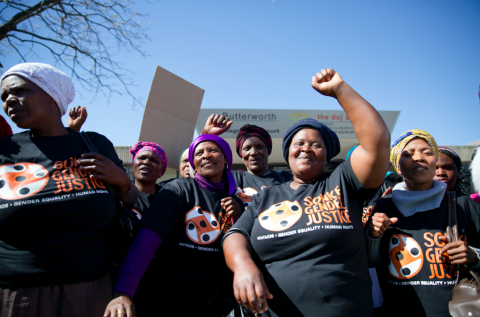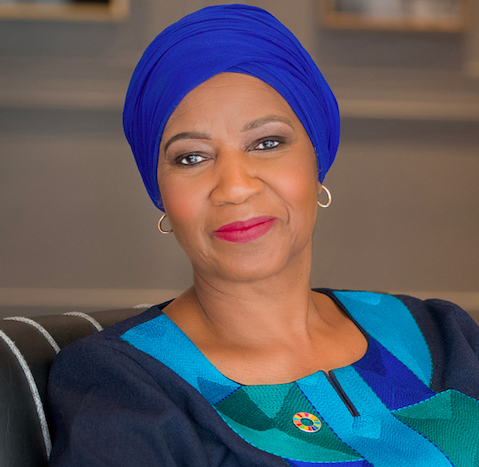Empowerment Government & Politics
Tackling Gender Inequality
Despite an internationally lauded constitution that protects women’s rights, and legislation like the Employment Equity Act, which promotes equal opportunity in the workplace, South African women still face major discrepancies in the workplace — particularly in the corporate sphere. While there are many issues facing women in the workplace, the three pressing issues that can be tackled head-on by the state and civil society are the disparity between men and women in senior leadership positions, the gender pay gap, and maternity leave.
Tackling these issues is important for women’s position in business to be cemented says Lusanda Raphulu, head of employment and benefits at Bowmans, because “women bring a diversity of thinking. They bring new strengths and attributes to organisations. That diversity means more ideas, more creativity and skills, which business can only benefit from”.
Gender and racial imbalance
Zama Khanyile, president of the African Women Chartered Accountants (AWCA), says there is still a large discrepancy between the sexes when it comes to the opportunity to be appointed to leadership positions at C-Suite and board level.
“At entry-level recruitment, it seems like there is a balance between men and women. The challenge is that women are being lost during the leadership journey, which leads to too few women making it to the top. Now, less than 30 per cent of women make it to leadership level, despite research showing that gender diversity adds value to business. Yet women are not given the exposure and opportunity to prove themselves as leaders,” she says.
The stats, says Khanyile, are even worse for black female professionals who have the added microaggression of race hindering their success. “We have racial segregation that colours the waters for black women.”
Busi Mavuso, CEO of Business Leadership South Africa (BLSA), says: “The Department of Education has shown that more women are graduating from tertiary educational institutions, but this is not feeding into the corporate pipeline. At a professionally qualified level, there are more African women than ever before holding degrees and yet we are not seeing them ascend the leadership ladder. This makes me believe there is a deliberate and conscious bias in place.”
Aggressive stance and advocacy required
Khanyile says that President Cyril Ramaphosa has set the tone of where South African business should be headed in terms of gender parity, with women making up 46 per cent of his cabinet. “You can see this same example in the number of women on the boards of state-owned enterprises (SOEs). The president is putting women at the coalface of driving the economy.”
However, government’s example is not perfect, she says. “Government needs to set further examples for business by giving women the opportunity to lead SOEs. Currently, everything is in a state of flux with women filling a lot of acting positions. Women should be part of the permanent plan.”
Mavuso, on the other hand, believes a more aggressive stance needs to be taken by lawmakers. “When Norway wanted to deal with gender parity, it put in targets. Our government needs to identify the problem clearly so that the solution is as clear. We need quotas in place and a timeframe in which to achieve them. For example, if the target is to have 40 per cent of C-suite and board positions filled by women, we need a succinct timeframe indicating by when this should be achieved. Government needs to monitor this and be vigilant to achieve success.”
What of civil society? “They are important,” says Mavuso, “as they are the voice outside the system. Their advocacy is important because it ensures that issues are kept on the radar. They need to keep highlighting these issues and keeping them at the forefront of people’s minds.”
Mavuso says that labour unions need to be brought into the issue, as they have one of the biggest voices in the country and are gatekeepers of employment practices. “Everyone has a role to play when it comes to changing the system and time needs to be taken to address certain parties in civil society so that they are aware of the role they have to play.”
Success stories
Raphulu says that in the current climate the state can incentivise business “by rewarding those organisations that support and empower women, and that have high levels of female representation in senior positions”.
Khanyisa believes that both the state and civil society need to be pushing a social narrative about gender and race transformation by highlighting the success stories in the industry.
“The NEF is led by a woman who creates space for other women. Sixty per cent of the staff is female and this goes down to junior level. Shirley Machaba was recently appointed CEO of PwC Southern Africa — she is the first black female CEO to lead one of the big four audit firms in South Africa. There are others, there are good examples that business can learn from.”
The gender pay gap
According to the ILO Wage 2018/2019 Report, South African women who are permanently employed earn 22.7 per cent less than their male counterparts. This is often for women doing the same work as their male counterpart.
While listed companies in the UK are required to report their gender pay gap, in South Africa this is still voluntary, something Khanyisa says needs to change. “The JSE should lead the way in this regard by making it a requirement for companies to report on how they plan to close the gap. We need proper transparency.”
Mavuso believes that to avoid discrepancies in pay, government should introduce legislation to regulate the practice and labour unions need to be brought into the discussions to further highlight the issue.
Maternity vs paternity benefits
Raphulu says that motherhood and maternity leave often slow down a woman’s career and that to combat this, the state needs to introduce legislation where both parents carry the burden equally.
She says that countries such as Iceland and Norway are examples of how maternity and paternity benefits should be handled. “Iceland and Norway give equal maternity and paternity benefits. When men and women share the childcare it creates a balance in that it’s not the woman’s career that bears the bulk of the effects of having children.”
Raphulu says the introduction of 10-days paternity leave is a step in the right direction.






 Sign-up and receive the Business Media MAGS newsletter OR SA Mining newsletter straight to your inbox.
Sign-up and receive the Business Media MAGS newsletter OR SA Mining newsletter straight to your inbox.